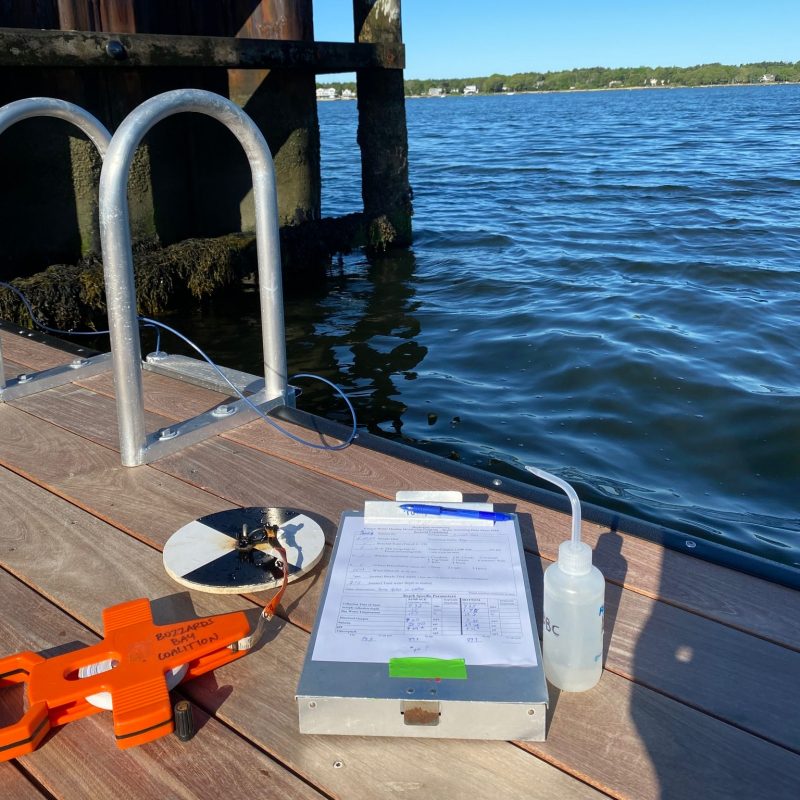How’s the Bay Doing? Results from Summer 2023 Testing Released
 Results from the 2023 water quality monitoring season were released last month on our website. Monitoring data is summarized into a Bay Health Index based on a score of zero to 100. A Bay Health Index score of 100 reflects a pristine Bay, while a 0 score indicates a degraded ecosystem. Scores reflect the state of the Bay as a habitat for fish, shellfish, and other parts of its natural ecosystem; they do not include measures of bacteria that would indicate whether water is safe for swimming or the status of shellfish beds.
Results from the 2023 water quality monitoring season were released last month on our website. Monitoring data is summarized into a Bay Health Index based on a score of zero to 100. A Bay Health Index score of 100 reflects a pristine Bay, while a 0 score indicates a degraded ecosystem. Scores reflect the state of the Bay as a habitat for fish, shellfish, and other parts of its natural ecosystem; they do not include measures of bacteria that would indicate whether water is safe for swimming or the status of shellfish beds.
The Coalition calculates Bay Health Index scores for more than 100 water bodies where sampling occurs, 37-percent had 2023 results that were categorized as “Good,” with scores of greater than 65; 46-percent were categorized as “Fair,” with scores between 35 and 65; and 18-percent were “Poor,” with scores of less than 35.
At a number of water bodies, there were decreases in Bay Health Index scores relative to the prior year’s results. One of the factors that caused decreased Bay Health Index scores in 2023 was an over-abundance of algae, resulting in a decrease of water clarity, particularly toward the end of the summer season.
Excess nitrogen leads to the over-abundance of algae. Eutrophication, or nutrient overloading, is evident in those areas scoring lowest on the Bay Health Index and is most often caused by wastewater from septic systems and older sewer plants entering the waterways. Warmer Bay temperatures are also creating a more hospitable environment for algae to thrive, which exacerbates nitrogen pollution.
Basic water quality sampling is conducted about once a week from late May until late September, with volunteers measuring oxygen levels, temperature, salinity, and water clarity. These basic parameters provide an immediate snapshot of Bay health and serve as an important indicator of emergent issues, including eutrophication. Additional sampling for nutrients and chlorophyll occurs four times in July and August, with analysis performed by the Marine Biological Laboratory in Woods Hole.
Bay Health Index scores are available on the Coalition’s website. To find the data for your part of the Bay, please visit https://www.savebuzzardsbay.org/bay-health/.
If you are interested in volunteering as a Baywatchers citizen scientist, please contact Tony Williams, director of the Coalition’s monitoring programs, at williams@savebuzzardsbay.org or 508-999-6363 ext. 203